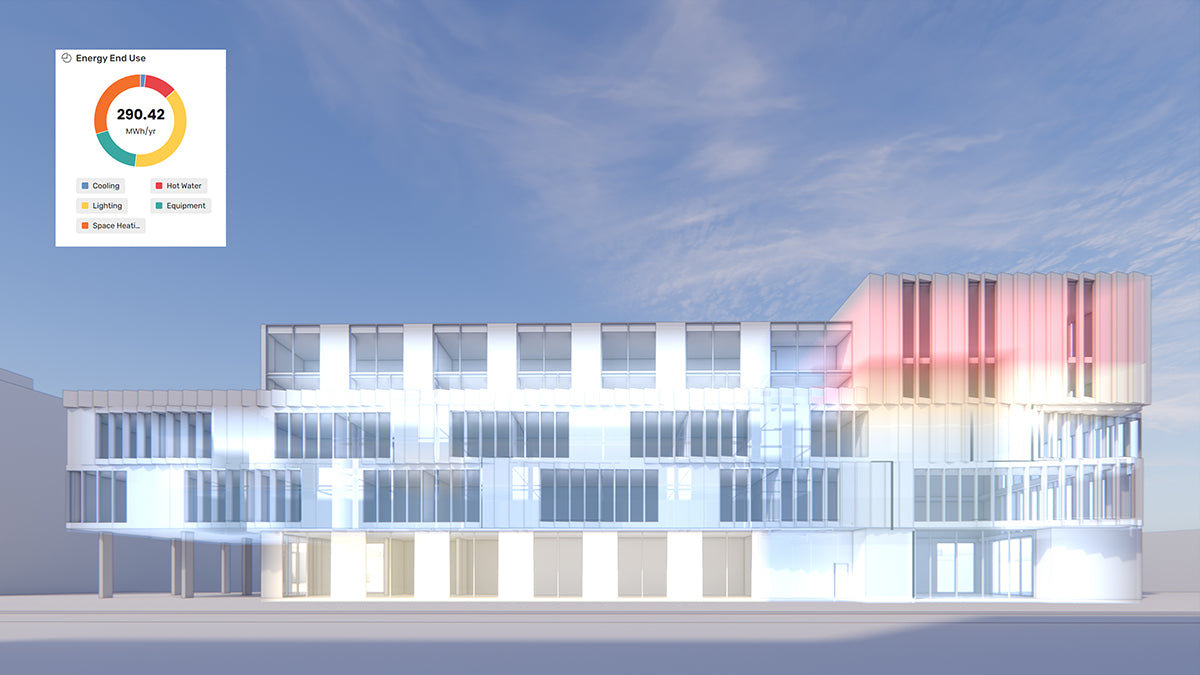Your Cart is Empty
Customer Testimonials
-
"Great customer service. The folks at Novedge were super helpful in navigating a somewhat complicated order including software upgrades and serial numbers in various stages of inactivity. They were friendly and helpful throughout the process.."
Ruben Ruckmark
"Quick & very helpful. We have been using Novedge for years and are very happy with their quick service when we need to make a purchase and excellent support resolving any issues."
Will Woodson
"Scott is the best. He reminds me about subscriptions dates, guides me in the correct direction for updates. He always responds promptly to me. He is literally the reason I continue to work with Novedge and will do so in the future."
Edward Mchugh
"Calvin Lok is “the man”. After my purchase of Sketchup 2021, he called me and provided step-by-step instructions to ease me through difficulties I was having with the setup of my new software."
Mike Borzage
Interview with Anthony Frausto-Robledo, Owner of Architosh
September 08, 2008 7 min read

Creative professionals have always had a fascination with Apple products and the Mac personal computer in particular. While Mac was one of the first personal computers to have a graphic user-interface, the connection seems to goes beyond that — and to continue even after the GUI became a standard. One of the first websites who endorsed the partnership of Architecture and Mac was Architosh. This website survived the collapse of the dot-com bubble and still today brings fresh news from the computer graphics and architectural field, high-quality interviews, product reviews, and offers a public forum where Mac fans can exchange opinions and share experiences. The person that makes this possible with his daily work and dedication is Anthony Frausto-Robledo.
Anthony, can you tell us a bit about yourself?
Sure. I’m a design person by nature, not a tech person and I think that gives me a slightly different perspective about tech in design fields.
I have a bachelor’s of architecture degree. I have worked in architecture firms since I was in high school. I was always very good at art. Because I am old enough to have experienced the architecture firm prior to the computer I remember the predominant feeling of a typical pre-computer firm. It felt like a studio. The spectrum of focus was unbroken. When computers came into practice there was this mental shift that occurred. The spectrum of focus within the creative firm got split, like an axe splitting a log. This interrupted the combination of energy and calm that I normally felt and associated with an architect’s office.
I’m a design person by nature, not a tech person and I think that gives me a slightly different perspective
When I graduated from architecture school I went to work for Fred Koetter of Koetter Kim & Associates, in Boston. Fred was dean of architecture at Yale at the time — he’s an absolute brilliant architect — and he was my primary architectural hero. Anyway, his office had the same focus of the pre-computer office yet it had computers everywhere. And they were Macs. What I learned was this office did amazing things with these Macs, with great efficiency and simplicity, and that these computers calmly fit into the backdrop of the office. In other words, they never got in our way. And because of this there was no need for the spectrum of focus to be split. The Macs simply "served us."
Did you really feel that strongly about technology interfering with the design process? When did Architosh start?
Yes and no. I could see that some people were not as affected by the disposition between the machine and their craft. But for me it just really interfered and affected me more. When I am working at my highest level, creatively, I can’t have any kind of major interruptions. But the personal computer is full of potential disaster and disruption. At this point in the late 90’s I decided I needed to get a hold of technology for myself. I needed, in other words, to figure out how to get technology to simply serve, serve really well… and without interruptions. I needed to ensure that tech in practice would be a lot more like R2D2 in Star Wars versus his always yacking robot companion C3PO. So I started a consultancy in 1998 and launched Architosh.com in February of 1999.
I launched Architosh.com in February of 1999
When it launched it was simply a listing of my research on Mac software for CAD, 3D and AEC. I was just exploring back then, but I soon found I had a very large global audience. At that time the Net was all the rage and so I began to look at it differently. Within two years I realized I loved the journalism challenge and opportunities it presented.
As a long time Mac user can you explain the reciprocal fascination between the graphic world and the Mac world?
The relationship you speak of centers on just a particular body of creative people — and not just in the graphics world. I think they see a reflection of themselves in the way the Macintosh computer is conceived as a whole. In other words, there is a shared sense of design values.
there is a shared sense of design values [between Mac and creative people]
The fascination part comes in because the personal computer by nature is an enchanting device — like the TV was back in the 50’s — except that you interact with it. When you meet someone who shares the same values as you, sees the world the way you do, you feel affirmed and that mutual affirmation sponsors a bond. In a sense the Mac has a powerful way of affirming one’s sense of values as they relate to being who they are — as creative individuals.
Architects seems to be particularly attracted to the Mac platform. What are the specific features of the Mac that are more important to architects?
Well… architects are creatives like painters, photographers and other graphic artists. It makes even more sense that they would like the Mac because they often have large philosophical views about the world and they design and conceive at very large urban scales. The more important they hold their values the more likely they are going to want to surround themselves with same or supporting values. Apple’s products speak with a crystal clear voice about the values behind them.
Apple’s products speak with a crystal clear voice about the values behind them
This makes them ideal models for creation. I can’t say that there are particular features of the Mac or any Apple product that make them more popular with architects. I would be speculating if I did that. What I can say is that Apple’s products lead the world in the areas of ease-of-use, product and service integration, and that Apple’s products are generally more beautiful, by both critical and popular agreement, than any competitor’s products out there.
There is a large community of users that orbits around your website. What kind of interaction is there between the community and the sponsoring companies or companies that are simply the topic of discussions?
Architosh is somewhat famous — at least in the Mac news world — for its executive level interview articles. These are very popular with a company’s end users. They get a chance to hear what might be coming down the pike, where a company’s values lie, and what to look forward to.
[Architosh users] get a chance to hear what might be coming down the pike, where a company’s values lie, and what to look forward to
However, company’s now use Blogs to do a lot of this, but that medium cannot authenticate a neutrality around larger issues — which is the primary value in independent journalism. Architosh will be launching a new site this Fall that will be building in more interaction capabilities into its journalism.
The business rules on the Internet are always changing. Your website has been able to adjust and adapt to new trends and users’ expectations. How do you manage to thrive in this ever changing environment?
There is a lot of writing about companies being nimble and flexible in order to survive and thrive, but I think that publications work more around issues of trust. In this case, discussions about be adaptive are a little different. Architosh is here because of a strategic long-term bet I made personally about Apple a decade ago. What we write about today is more relevant than ever. But what is more key now is that we have built up trust, respect, and reliability by doing this back when nobody else was interested in writing about Apple.
we have built up trust, respect, and reliability
So I think what I’m saying is, we have taken the long-view approach and have stuck to our guns. But doing that is not enough to win or be right. One only needs to look at US foreign policy to understand that. What you really need with the long-view approach is to be able to read the situation correctly at the beginning.
You contribute to your website content with high quality, professionally written interviews and articles. What are the limits of user-generated content and how much space is left for editors and journalists like you?
When the new Architosh launches this Fall there will be even more possibilities for user-generated content. Right now, this is mostly contained within the Architosh forums, but this will grow both in the Fall and next year. As for space for editors and journalists?
Anybody can contribute an article for publication, and many user-readers have
We have an open policy. Anybody can contribute an article for publication, and many user-readers have. In general, our product reviews are only written by knowledgeable and experienced product review writers.
The Mac has popularized the concept of no barrier between the desktop and the cloud (Internet). How will this approach affect architects and their work process?
We have been writing about this for quite some time now. We do quite a bit in the cloud internally with Architosh and have been for more than three years.
The Architosh team is globally dispersed, from Germany to Perth, Australia
The Architosh team is globally dispersed, from Germany to Perth, Australia.
What cloud computing will do — for not just architects but all businesses — will enable them to globalize their reach for talent and services. I believe that doing this will allow them to strengthen their competitive position relative to their peers.
I would like to thank Anthony Frausto-Robledo for taking the time to answer my questions. If you have any questions for Anthony or for Novedge, please leave a comment below and we will be glad to answer.
Franco Folini
Also in NOVEDGE Blog

How the AEC Industry Shifted Towards Essential Sustainable Building Design
August 15, 2024 4 min read
Read More
Unlocking New Realms of Design with Enscape 4.1: Introducing Impact Add-on and Lot More
August 02, 2024 2 min read
Read More
Explore Autodesk Revit 2025.2: New Features and Enhancements for Enhanced BIM Workflows
July 30, 2024 3 min read
Read MoreSubscribe
Sign up to get the latest on sales, new releases and more …


